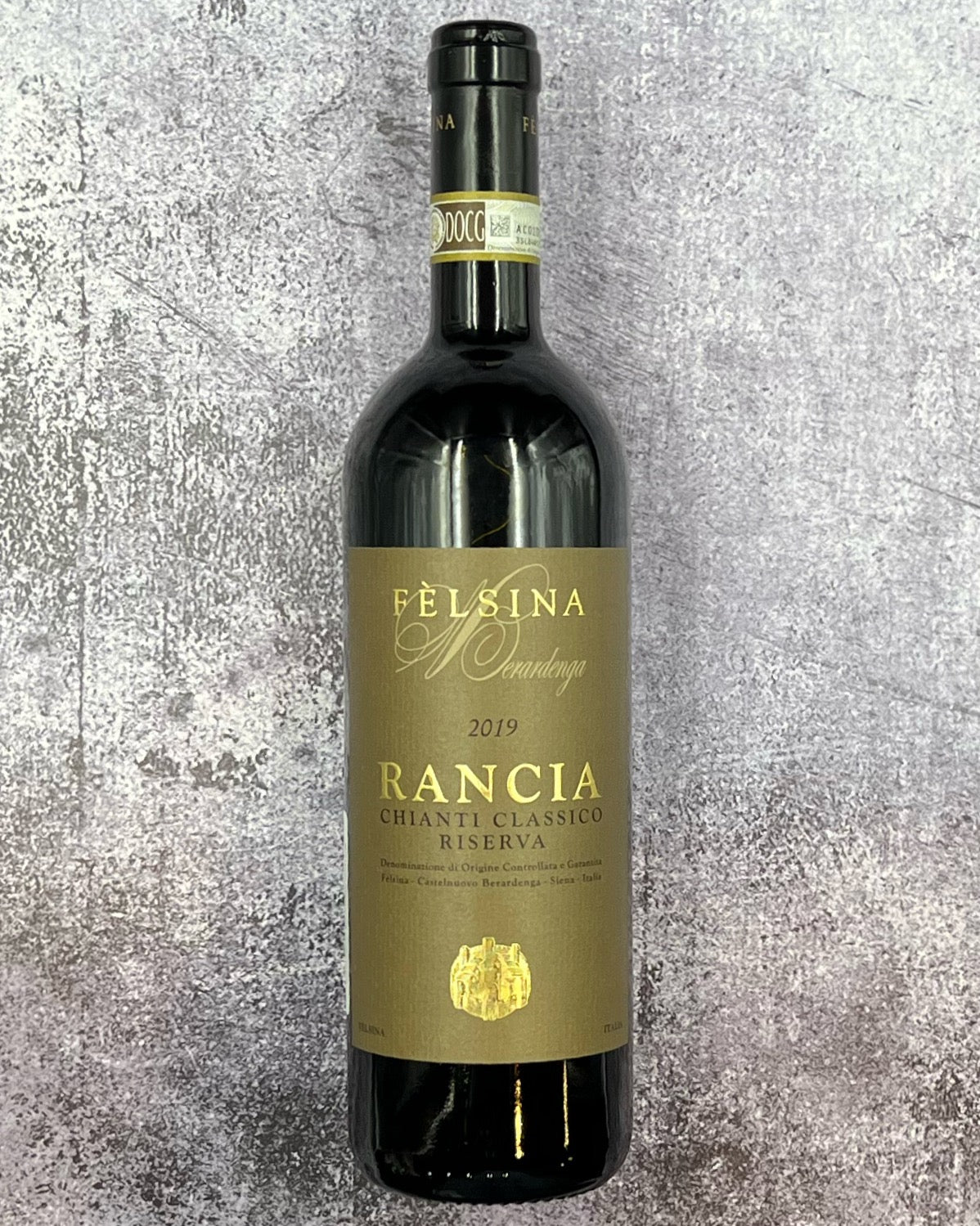Description
From: Chianti Classico, Tuscany, Italy
Varietal: Sangiovese
Taste and Critical Acclaim: The 2019 Felsina Chianti Classico Riserva Rancia has a spicy nose with floral notes and hints of wild red and black berries, accompanied by mineral impressions and light toasted notes. The spice re-appears on the palate, which displays firm but supple tannins, and the finale is vigorous and taut. Overall, the wine is compelling for its flavor-rich mid-palate and supporting acidity.
“Darker fruit on the nose with walnut, spice box, incense and espresso bean, too. Medium-bodied, firm and structured with polished tannins and a creamy, compact mid-palate. Quality dark oak spice throughout. Long and rich.” —James Suckling, 95 points (July 2022)
“Amplified even further is the 2019 Chianti Classico Riserva Rancia, which offers up a musky cologne of cedar, cherry licorice, cracked pepper, and menthol. It is medium to full bodied, with a rich tannin structure, a broad mid-palate, and a long, fragrant finish. This will certainly be a wine that needs time in cellar and will continue to improve over the coming 10-15 years. (AF)” —Jeb Dunnuck, 94 points (January 2023)
“An icon wine of Tuscany, the Fèlsina 2019 Chianti Classico Riserva Rancia (with 48,000 bottles made) is distinguished by its special aromatic fingerprint that truly brings us to a sense of place. At its heart, the wine reveals dark fruit and plum. More interesting, however, are the dusty mineral sensations that give so much texture and depth to the Rancia. These aromas can only be found in Sangiovese from the galestro and alberese-rich soils of Chianti Classico. This vintage follows up with sweet tobacco, toasted chestnut and scorched earth. Give this wine more time to flesh out and evolve in the bottle. (ML)” —Robert Parker’s Wine Advocate, 94+ points (September 2023)
“Intense ruby red colour. The bouquet is young, balanced, with well-marked fresh floral notes, followed by fruity notes of berries and cherries. Fresh, lively and still fruity on the palate, with a slight mineral touch, persistent and spicy.” —Falstaff, 94 points
Pairing: When thinking about what to pair with this wine, seek out dishes seasoned with rustic Mediterranean garden herbs. This could be anything from beef or lamb burgers to creamy mushroom risotto, and pizza or pasta featuring tomato-based sauce with meat or mushrooms. Traditional pairing options for this classic wine include Bistecca Alla Fiorentina, or Florentine steak, and wild boar stew. We love Danette St. Onge’s recipe for Cinghiale in Dolceforte (Tuscan Wild Boar Stew With Chocolate) because it gives alternative meat suggestions for those of us who can’t readily get our hands on wild boar.
About.
Fattoria di Fèlsina has long been one of the great names in Tuscany. Based in the Chianti Classico region, Fèlsina produces one of the finest ranges of age worthy and complex Chianti bottlings in all of Italy (and like many great Italian estates, this could be debated). Unlike many of their neighbors, Fèlsina has never succumbed to the temptation to produce “new age” wines from their fine Chianti vineyards, and continues to grow solely Sangiovese here, rather than dabble with international-styled blends that include Cabernet Sauvignon or Merlot.
Consequently, their elegant yet intensely flavored Chiantis place them firmly among the top handful of Chianti producers, with the best vintages of their top Riserva Chiantis often approaching Brunello di Montalcino in terms of complexity and potential for longevity.
The style of the Fèlsina wines is deep and black fruity, with classic Tuscan spices married to fine expressions of soil, smoky tones and a deft touch of new oak. They will often have a bit of tannin in their youths, though always well-integrated into the body of the wine.
As Sangiovese is much more adept at picking up the underlying soil nuances of the vineyard than either Cabernet Sauvignon or Merlot, the various Fèlsina Chianti bottlings and their Fontalloro are amongst the most classic expressions of Tuscan wine to be found in the market today. Delicious upon release, the wines of Fèlsina reach their apogees with several years of bottle age and are as fine examples as one can hope to find of great, classic Tuscan reds.
The Rancia vineyard is located in Castelnuovo Berardenga at 400 to 420 meters above sea level with a fine southwest-facing exposure. It takes its name from the historic Rancia farmhouse, once a Benedictine monastery. The first vintage of this wine was made in 1983, but the vineyards were re-planted in the early 2000s using the genetic material from massal selections gathered from the original Rancia vineyard. The soil is composed of limestone-derived alberese classic to the Castelnuovo Berardenga area and of galestro marl in some areas.

